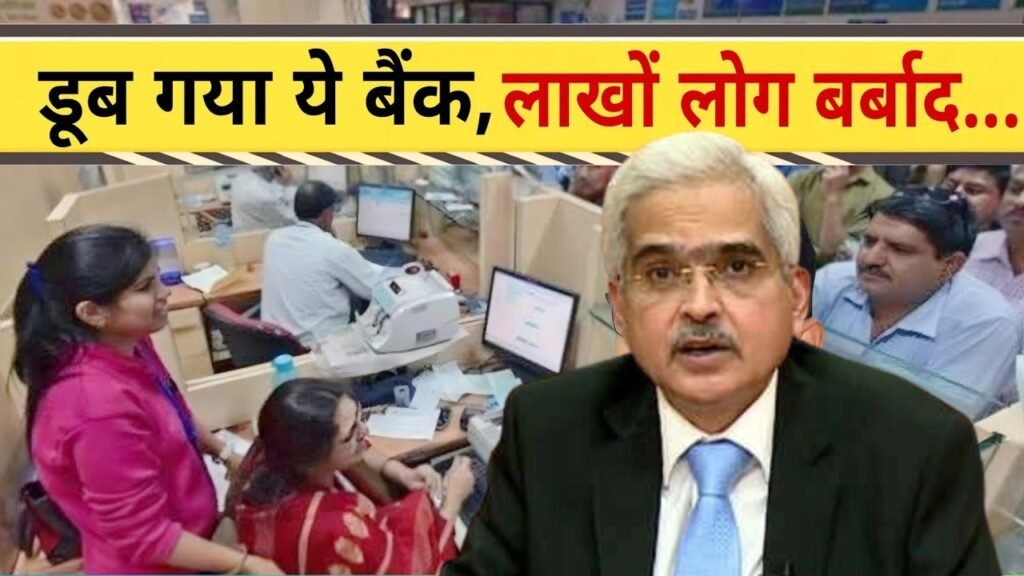In recent times, news about failing banks has become increasingly common, causing concern among customers and impacting the overall economy. The latest report of another bank facing a financial crisis has further heightened public anxiety. Given this situation, many people are wondering which banks are the safest for depositing their hard-earned money.
To address this issue, the Reserve Bank of India (RBI) publishes a list of Domestic Systemically Important Banks (D-SIBs) annually. These banks are deemed crucial to the nation’s financial stability. Let’s explore which banks are considered the safest and why they are on this exclusive list.
Which Banks Are the Safest?
The RBI’s D-SIBs list features three major banks that are regarded as “Too Big to Fail.” This designation implies that the chances of these banks collapsing are extremely low, ensuring financial security for depositors.
Banks Included in the D-SIBs List
State Bank of India (SBI)
As India’s largest public-sector bank, SBI is widely regarded as the safest financial institution in the country.
HDFC Bank
This leading private sector bank boasts a strong balance sheet and a low Non-Performing Asset (NPA) ratio, making it a secure option for customers.
ICICI Bank
Another top private bank, ICICI has earned its place on the D-SIBs list due to its financial stability and high customer trust.
Understanding D-SIBs
Domestic Systemically Important Banks (D-SIBs) are financial institutions that play a crucial role in maintaining economic stability. The failure of any of these banks could have a severe impact on the country’s financial system. To prevent this, the government and RBI provide special safeguards to these banks.
Key Features of D-SIBs
- These banks are required to maintain additional capital reserves.
- RBI and the government closely monitor their financial health.
- They are considered “Too Big to Fail”, meaning that in the event of financial trouble, the government will take necessary measures to support them.
Overview of the Safest Banks
| Bank Name | Key Features |
|---|---|
| State Bank of India (SBI) | Largest government-owned bank in India |
| HDFC Bank | Strongest balance sheet among private banks |
| ICICI Bank | Low NPA and high customer trust in the private sector |
Reasons Behind Banking Crises
There are several factors that contribute to bank failures, including:
- High NPAs: When banks struggle to recover their loans, they accumulate Non-Performing Assets (NPA), leading to financial instability.
- Poor Management: Inefficient leadership and mismanagement can cause banks to collapse.
- Fraud and Scams: Financial frauds and scams result in significant losses for banks.
- Low Capital Reserves: Banks with inadequate capital reserves are more vulnerable to financial crises.
How to Identify a Safe Bank?
To determine the financial security of a bank, consider the following factors:
- Check the bank’s balance sheet to assess its financial health.
- Evaluate the NPA rate, as banks with lower NPAs are considered more stable.
- Read customer reviews to gauge public trust and satisfaction.
- Refer to RBI reports for up-to-date insights on a bank’s financial status.
Caution with Small Banks
Recent reports indicate that many small cooperative and private banks are facing financial distress. Therefore, it is always advisable to deposit money in larger, well-established banks. Before investing in small banks, it is crucial to verify their financial standing and credibility.
Is Your Money Safe?
Depositing funds in trusted banks like SBI, HDFC, or ICICI ensures safety, as these banks hold significant importance in the Indian economy. Given their status as D-SIBs, the government is committed to supporting them in times of crisis, reducing any risk to depositors.
Disclaimer
This article is intended for informational purposes only. Before making any financial decisions, consult a financial expert. The information provided is based on various sources, and actual conditions may vary.
